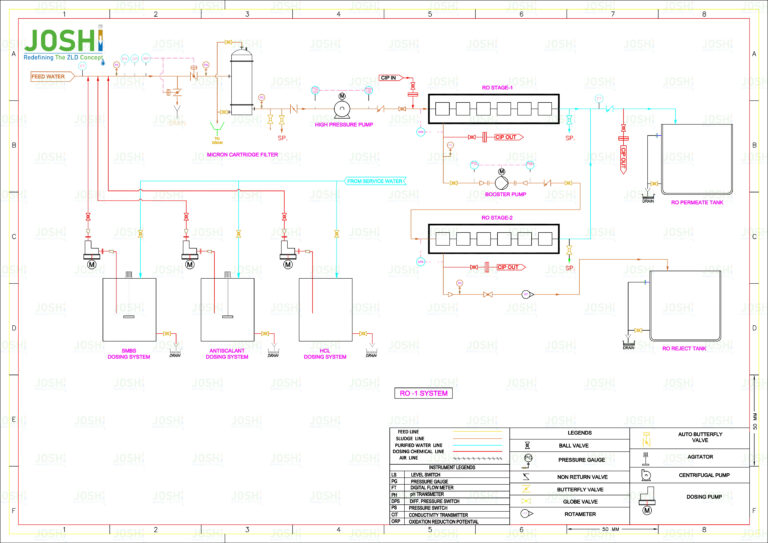RO Plant - Reverse Osmosis Plant
RO Plant, or Reverse Osmosis Plant, is a water treatment system that utilizes reverse osmosis technology to remove a wide range of contaminants from water. Reverse osmosis is a membrane-base filtration process that applies pressure to overcome osmotic pressure and separate dissolve solids, ions, particles, and other impurities from water.
System Components
Pre-Treatment: Prior to the reverse osmosis process, water often undergoes pre-treatment steps to remove larger particles and suspend solids, chlorine, and other substances that may damage or foul the RO membranes.
High-Pressure Pump: A high-pressure pump is use to supply the require pressure to drive water through the RO membranes.
Reverse Osmosis Membranes: RO Plants consist of semi-permeable membranes that allow water molecules to pass through while rejecting dissolve solids, salts, and other impurities.
Concentrate Disposal: The concentrate stream, also known as the reject or concentrate, contains the impurities and contaminants that are reject by the RO membranes.
Permeate Collection: The filter water that passes through the RO membranes is referr to as permeate.
Post-Treatment: In some cases, the permeate from the RO process may undergo post-treatment to adjust pH, remineralize, and stabilize the water quality before it is use or distribute.
Significance & Advantages
Desalination : RO Plants are extensively use in seawater desalination projects to produce freshwater by removing dissolve salts and other contaminants from seawater.
Drinking Water Treatment: RO Plants are employ to treat brackish water or groundwater sources and provide high-quality drinking water. They effectively remove dissolve solids, salts, microorganisms, and other contaminants.
Industrial Applications: RO Plants are utilize in industries such as food and beverage processing, pharmaceutical manufacturing, electronics manufacturing, and power generation.






